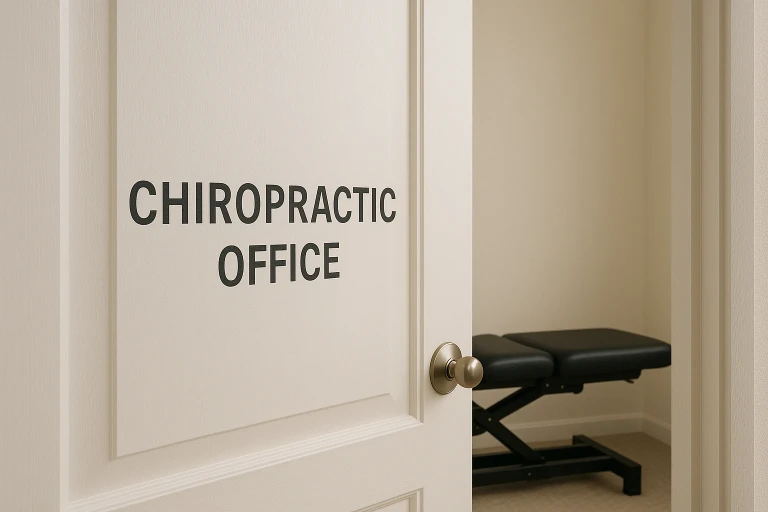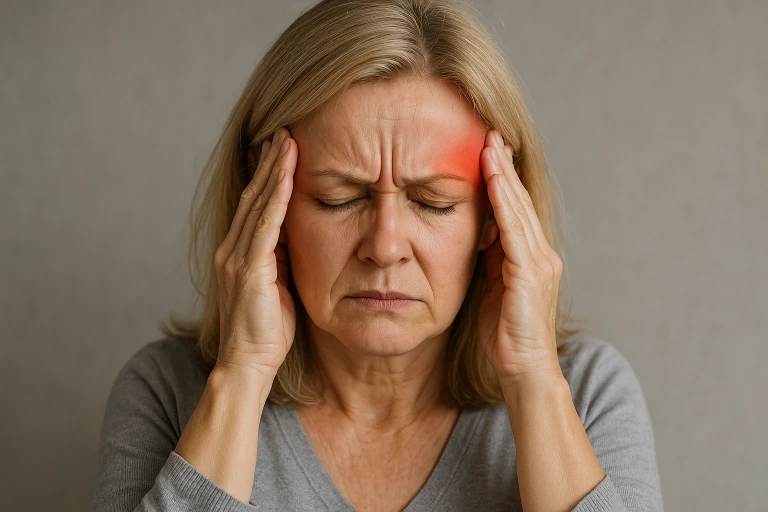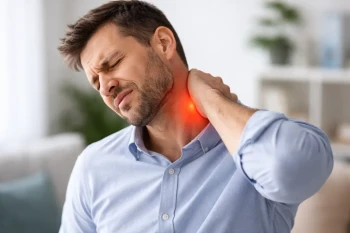
Trigeminal Neuralgia (TN) is described as one of the most severe pains known to man. It is a disorder of the trigeminal nerve that produces sudden, excruciating bouts of facial pain. This pain typically strikes where the nerves branch to the nose, lips, eyes, ears, scalp, forehead, upper and lower jaw, and even the tongue. TN most often affects only one side of the face, and, over time, the pain usually increases in severity and frequency. The pain is so intense that TN is often referred to as the “suicide disease.”
Renowned author and upper cervical advocate, Pastor James Tomasi knows the agony firsthand, having fought the pain of Trigeminal Neuralgia for 12 years. In his book, “What TIME Tuesday?”, Tomasi details his struggle with TN:
“…the pain started as a series of jolts that progressively became steady throbbing pain. Sometimes, it was like a drill going through the molars in my upper right jaw. Then, it would suddenly stop. Certain things would trigger the pain: a slight breeze, a touch with a toothbrush, soap on my cheek, opening my mouth, speaking, turning my head too fast, etc., and then the ‘Beast’ would return with a vengeance. Other times, I would awaken to the sensation of an electric drill driving electric bits into the back of my eyeball. It was so unbearable that I would scream out loud while I held the pillow over my face…”
By downloading the Digital Patient Chart mobile app you can better control your patient portal.
“By the grace of God, my wife heard about upper cervical care on the radio. Within 11 days of my first upper cervical correction – after three corrections, I had no pain!”
Medical Treatments For Trigeminal Neuralgia & Associated Facial Pain
The most common medical treatments for TN include either prescription medications or surgery. Some typical drugs used to treat this disorder are anti-seizure drugs, such as Tegretol or Neurontin. In the last several years, different drugs such as Trileptal, Topamax, Depakote and even anti-depressants are being utilized. However, over a period of time, the drugs’ effectiveness may diminish, or serious side effects may develop.
As a last resort, many TN patients consider surgery to end their suffering. According to the Mayo Clinic, the goal if most surgical procedures is to either damage or destroy the part of the trigeminal nerve that is the source of the pain. Because the success of these procedures depends on damaging the nerve, one obvious side effect is facial numbness. Some of the more common surgical procedures include:
- Radiofrequency Rhizotomy
- Glycerol Rhizotomy
- Balloon Compression
- Microvascular Decompression
- Gamma Knife
Unfortunately, a recent report revealed that medical treatment eventually fails for nearly 50% of patients with trigeminal neuralgia.
Upper Cervical Care & Trigeminal Neuralgia
Research has revealed that TN stems from irritation or damage to the trigeminal nerve and the central trigeminal system in the upper spinal cord and brain stem. Medical literature has shown that trauma to the head, neck, and upper back can injure the nerve pathways in the spinal cord and brain stem and possibly cause TN. The facial pain can begin immediately after the injury, or in some cases, takes months or years to develop.
A recently concluded pilot study, conducted at Life University’s Sid E. Williams Research Center, yielded impressive results with Trigeminal Neuralgia patients, the participants received Upper Cervical Chiropractic Care over the course if eight weeks. All the participants had major pain relief within the first four weeks and continued to improve gradually after that. Research director Dr. Roger Hinson suggests that when TN develops, it may be because an upper cervical misalignment has contributed to the hyperactive state of the nerve, thereby causing severe facial pain associated with TN.
Upper Cervical Health Care of Orange County
At Upper Cervical Health Care of Orange County, Dr. Jerome Ri, DC has the education, training, and experience to locate and correct injuries to the upper neck. By correcting these injuries, they reduce the irritation to the nerves in the brain stem and spinal cord that can trigger TN. An upper cervical chiropractic examination is necessary in each individual’s case to determine whether an upper cervical injury is present and whether benefit from upper cervical care can be achieved. This can be done by calling Upper Cervical Health Care at (714) 848-8122.
Most health insurance companies recognize the benefits of Upper Cervical Chiropractic Care and include it among the services they cover.
If you or someone you know is suffering from Trigeminal Neuralgia and you would like to seek the help of Dr. Ri, call the office today at (714) 848-8122 or Contact Us to request your no-cost consultation and exam.
Trigeminal Neuralgia (TN) is described as one of the most severe pains known to man. It is a disorder of the trigeminal nerve that produces sudden, excruciating bouts of facial pain.
References & Case Studies
Amalu, W., et al. Applied Upper Cervical Biomechanics Course. International Upper Cervical Chiropractic Association, Redwood City, CA 1993.
Arky, R., et al., Physicians’ Desk Reference(PDR). Montvale, NJ. Medical Economics Data Production Co., 2003.
Blair Upper Cervical Chiropractic Certification. Palmer College Of Chiropractic, Davenport, IA 2005.
Breig A. Adverse Mechanical Tension in the Central Nervous System, An analysis of Cause and Effect, Relief by Functional Neurosurgery. Almqvist & Wilsell International, Stockholm, Sweden, 1978.
Canavan D, Graff-Radford SB, Traumatic dysesthesia of the trigeminal nerve. J Orofac Pain 1994 Fall; 8(4): 391-6.
Elias WJ, Burchiel KJ. Trigeminal neuralgia and other neuropathic pain syndromes of the head and face. Curr Pain Headache Rep 2002; 6(2): 115-24.
Eriksen, K: Upper Cervical Subluxation Complex – A Review of the Chiropractic and Medical Literature. Baltimore, MD, Lippincott, Williams & Wilkins, 2004.
Fuchs P. On the treatment of posttraumatic neuritis and neuralgia in the jaw region. Fortschr Kiefer Gesichtschir 1967; 12: 41-5.
Gao S, Wang Y, Wang Z. Assessment of trigeminal somatosensory evoked potentials in burning mouth syndrome. Chin J Dent Res 2000 May; 3(1): 40-6.
Gregg JM. Post-traumatic trigeminal neuralgia: response to physiological, surgical and pharmacologic therapies.
Grostic, JD. Dentate Ligament-Cord Distortion Hypothesis. Chiro Research J, 1988; 1(1):47-55.
Guyton, A., Hall, J.: Textbook of Medical Physiology. Philadephia, W.B. Saunders Co., 2000.
Hinson R. Upper Cervical Neurology and Trigeminal Neuralgia. Abstracts From the 16th Annual Upper Cervical Spine Conference, 1999. Marietta, GA.
Hinson, R, Brown S. Chiropractic management of Trigeminal Neuralgia: A Preliminary Study. 130th Annual Meeting of the American Public Health Assoc., 2002.
Jaaskelainen SK, Forssell H, Tenovuo O. Electrophysiological testing of the trigeminal facial system: aid in the diagnosis of atypical facial pain. Pain 1999 Mar; 80(1-2): 191-200.
Kale, MU. Kale Certification Residency Program. Spartanburg, SC, 2004.
Knibestol M, Hildingsson C, Toolanen G. Trigeminal sensory impairment after soft-tissue injury of the cervical spine. A quantitative evaluation of cutaneous thresholds for vibration and temperature. Acta Neurol Scand 1990 Oct; 82(4): 271-6.
Mayo Clinic 200 First Street Southwest, Rochester, MN 55905.
McClone R, Morton RJ, Sloan JP. Trigeminal pain due to whiplash injury. Injury 1988 Sep; 19(5): 366.
Moritz M, Niederdellmann H, Dammer R. Involvement of the trigeminal nerve in fractures of the face. Rev Stomatol Chir Maxillofac 1995; 96(1): 46-9.
Nappi G, Facchinetti F, Bono G. Plasma opioid levels in post-traumatic chronic headache and trigeminal neuralgia: maintained response to acupuncture. Headache 1982 Nov; 22(6): 276-9.
National Upper Cervical Chiropractic Association and Guidelines and Standards of Care. NUCCA. Monroe:1997.
Paillas JE, Pellet W, Rakotobe A. Post-traumatic facial algia. Rev Otoneuroophtalmol 1970 Jan-Feb; 42(1): 5-13.
Palmer, B.J.: Chiropractic Clinical Controlled Research, Vol.XXV. W.B.Cronkey Company, Hammond, IN.
Palmer, B.J. Subluxation Specific, Adjustment Specific, VOL. XVIII.
Rana NA. Natural history of Atlanto-Axial Subluxation in Rheumatoid Arthritis. Spine, 1989; 14(10):1054-1056.
Ren K, Dubner R. Central nervous system plasticity and persistent pain. J Orofac pain 1999 Summer; 13(3): 155-63; discussion 164-71.
Rozenfel’d LG, Timofeev AA, Borisenko ON. Thermographic diagnosis of diseases of the maxillofacial area. Stommatologiia 1989 Jan-Feb; 68(1): 54-8.
Sessle BJ. Neural mechanisms and pathways in craniofacial pain. Can J Neurol Sci 1999 Nov; 26 Suppl 3: S7-11.
Sweat, RW. Atlas Orthogonal Board Certification, Life University, Atlanta, GA, 2005.
Szabo G, Hoffman J. Posttramatic trigeminal neuralgia. Fogorv Sz 1973 Sep; 66(9): 268-71.
Tierney, L.M., et al.: Current Medical Diagnosis and Treatment 2005, 44th Edition. New York, NY, Lange Medical Books/McGraw-Hill, 2005.
Tomasi, J. what Time Tuesday? International Christian Servants, Oklahoma City, OK. 2005.
Upper Cervical Diplomate Program, Sherman College of Straight Chiropractic. Spartanburg, SC, 2005.
Weigel G, Casey KF. Striking Back! The Trigeminal Neuralgia Handbook. Published by the Trigeminal neuralgia Assoc. 2000.
Woda A, Pionchon P. A unified concept of idiopathic orofacial pain: pathophysiologic features. J Orofac Pain 2000 Summer; 14(3): 196-212.









Leave a comment